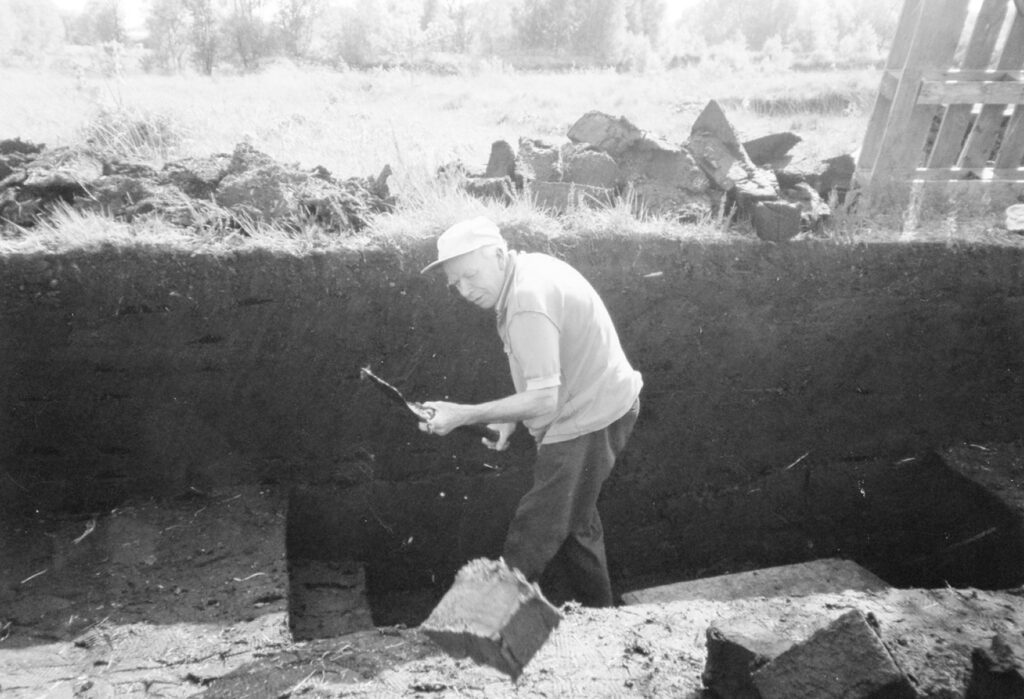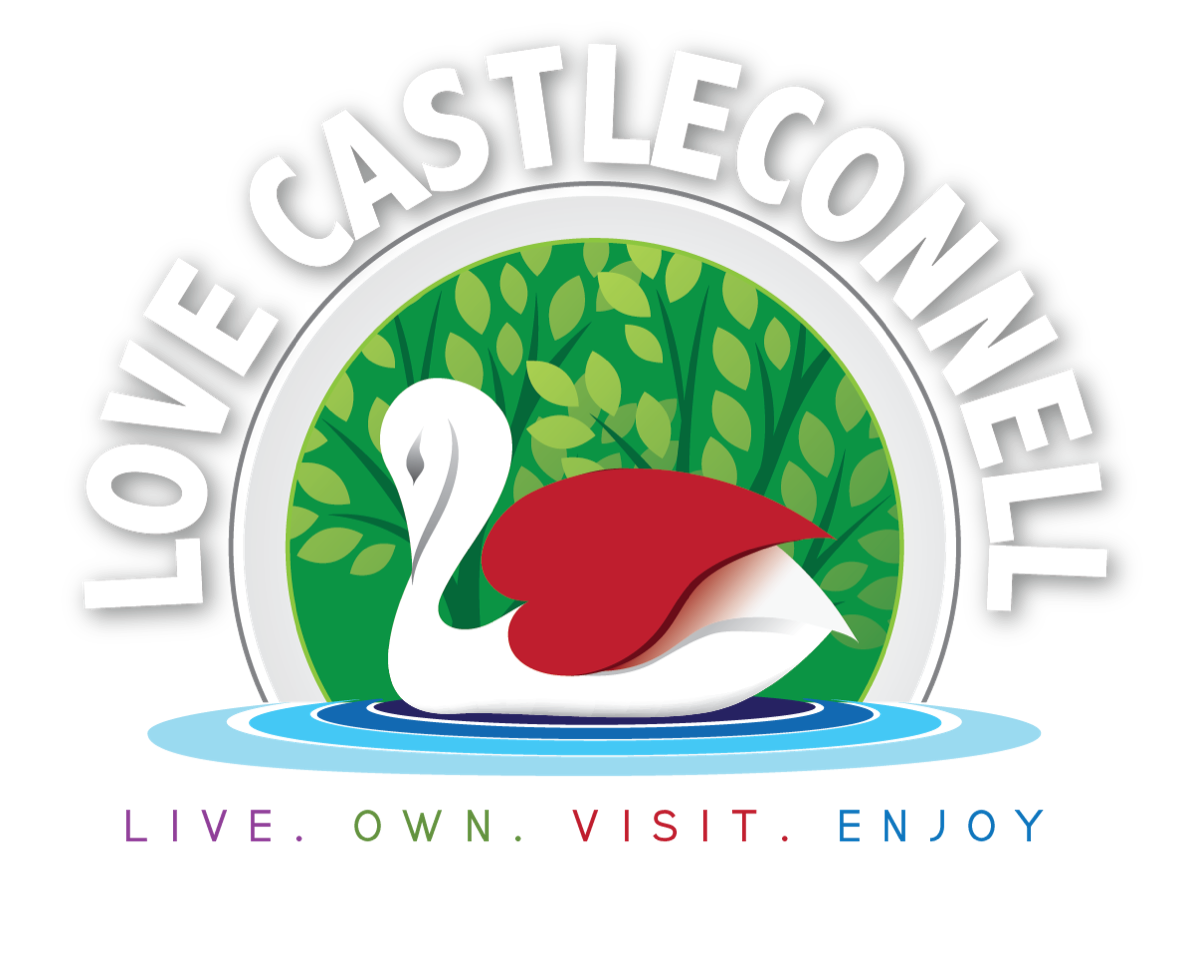By Joe Carroll
This year of 2008 we witnessed the end of another long tradition in the parish with the passing into history of the old craft of the slanesmen who worked the bogs of Castleconnell and Annaholty. This spring and summer’s turf cutting was confined to lines of turf churned out by a mechanical turfcutting machine at the request of turbary owners who still prefer a turf fire to central heating, electrical or gas appliances. The absence this year of the few traditional turf cutters spelt the end of a craft and a skill that for more than a century was a way of life for many.
Turf cutting in the bogs of Castleconnell and Annaholty goes back a long way. The first recorded accounts of turf being cut with a slane or sleán was in the bogs owned by Mac Nabs and Cawleys located left and right off the road near the village of Montpelier during the Famine years of the 1840s. Large workforces were employed on these bogs and the availability of work of this kind played a large role in alleviating the starvation and hardships of many in the area. The rate of pay was 5 pence a day from dawn to dark and extra was paid to slanesmen and horse and cart owners.
Then in later times many families became closely associated with turf cutting and it was mainly from certain areas that the well known slanesmen came, from families with a long tradition in the craft. One such area was appropriately enough, the Bog Road where the families of the Bourkes, Tierneys, Moloneys, Keatings and McMahons had few equals. The same could be said of Steve Casey, Richie Buckley, Michael Reidy and Tom Joyce. In Gouig and Clooncommons there were the Keane, Shyne, Byrnes, Murphy and Ryan families who produced the fine slanesmen in that era. Woodpark and Gardenhill could boast too of men who could hold their own in any lineup of expert slanesmen. They came from the Berkerys, Joyces, Doyles and Maddens. There were some fine individual craftsmen too like John Joe Mulqueen, Tommy Reilly, John O’Neill and Ned Bourke. In that area too there were the O’Donnell’s and the Quinns of Woodroad. From Stradbally there was Paddy Travers, another expert with the slane and there was Joe Ryan from the Old Street, Johnny O’Brien of Nelson’s Cross, Christy McInerney of the New Line, Seán Ryan from Derryhasna and the Skehans who also gave their name to the well known Cross.
But there was a social side also to the craft of the turf cutter and an event held as part of a Rural Week programme in the 1940’s was a competition to find the best slanesman and barrowman in the parish. The An Caisleán – The Castleconnell, Ahane, Montpelier Annual 2008 100 contest was held on Matthew Doyle’s turf bank a short distance from the Dublin Road. The event generated a lot of interest and speculation and attracted a large crowd to Gouig bog on a Saturday in June.
The rules of the competition were laid down that each pair, slanesman and barrowman was given a bench of turf to cut and wheel out to a spread. The time allowed was one hour. Marks were awarded for the amount of turf cut, the size and uniformity of the turf and the neatness of the bank at the finish. The barrowman’s work was judged on the way the turf was thrown, and the tidiness of the spread.
Ten teams took part in the competition, encouraged and urged on by friends, relations and supporters. The judges were Tom McCabe from Shower and Johnny Doyle from Woodpark, who after much deliberation and consultation arrived at a decision. The result was announced on the Sunday at a Féis held in the village. Slanesman, Jimmy Hyland of Belmont and his barrowman, Martin Tierney of the Bog Road were declared the winners. In second place were Seán Ryan of Derryhasna and Johnny O’Brien of Nelson’s Cross. Third place went to the Woodpark pairing of Michael Meaney and Mick Doyle. A fine slanesman from Ahane, Martin Collins of Laught and his barrowman, Tom Wilmott of Drominboy were in fourth place.
Then in the industrial boom of the late 1960s and early ‘70s turf cutting was very much in decline and save for the few dedicated turf men the bogs became deserted. But in the following decade the rising cost of other fuels sent people back to the bogs of Castleconnell and Annaholty. But it was a new age and the introduction of the turf-cutting machine that could turn out large quantities in a short time spelt the beginning of the end for the traditional method of turf cutting in the parish, and even though the old ways, the skills and techniques were still practised by the few, the grand old craft of the Castleconnell slanesmen was slowly dying out.
Silence has settled over the once great peat land, a silence that is only broken by the lonesome cry of the curlew.
The slanesmen have gone their way



